lamwn
New Member

Posts: 7
|
Post by lamwn on Mar 1, 2008 15:04:08 GMT 8
Hi all, recently I realised that my pitchers have been having shorter life expectancy. I am not sure if it has always been the case, or whether it is something new which has just started developing, but it has been quite troubling to see more dead pitchers than live ones... truncata 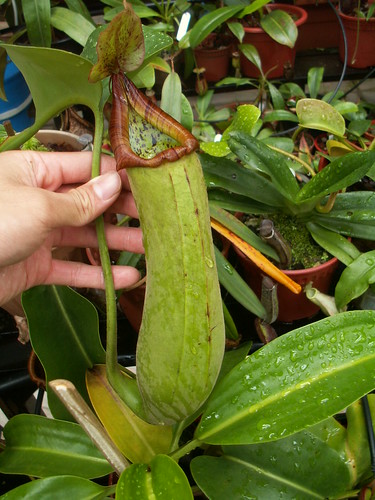 how many live pitchers do typical truncatas carry at any one time? 2? 3? Mine only carries 1. (above, present pitcher. Below, previous pitcher, already half dead - it begins dying the moment the new one opens) 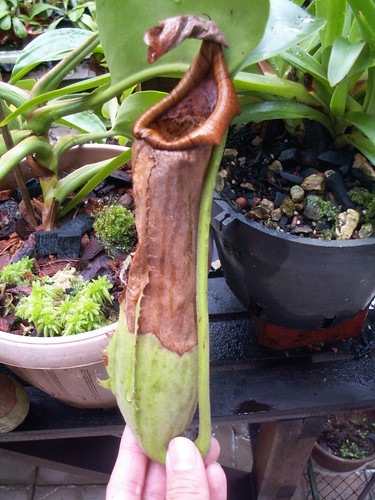 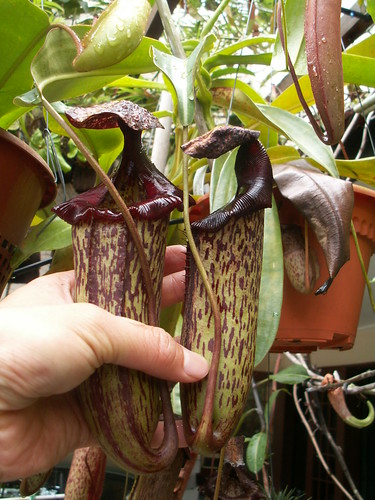 sibuyanensis x maxima - as a maxima hybrid, I should expect this to have long lasting pitchers...but my plant only carries 2 live ones now, and the one on the left has a shrivelling lid already! Another problem here is some sort of sooty mould - 2 forms, the black and the white. 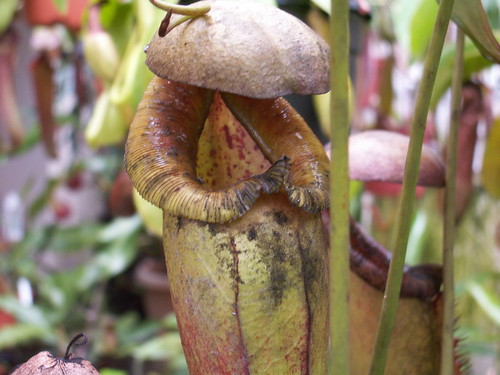 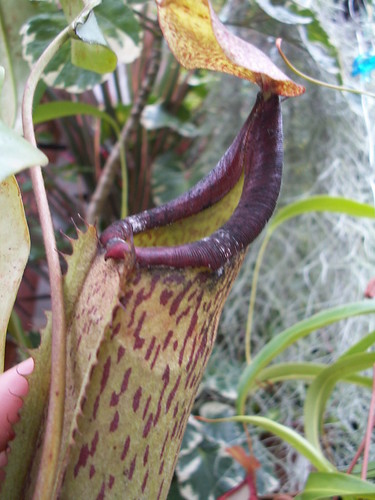 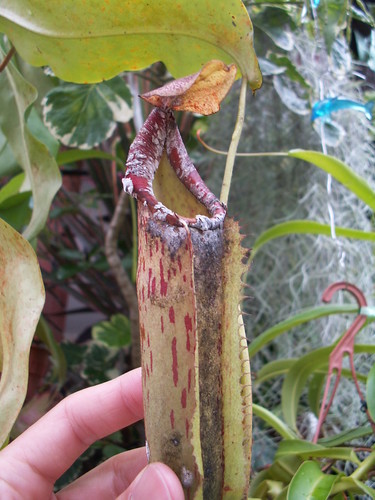 I tried spraying a dilute blend of white summer oil and captan, but it didnt seem to make any difference. Any ideas? My reason for starting this thread is to ask about other growers' experiences - what factors affect pitcher lifespan? I have heard from other forummers light, humidity, and if its light, it may well be right, since I have been having very little sunlight since october, and it means I should be expecting longer-lasting pitchers in the months to come (my growing area gets more light in Apr-Aug months). But it seems a little too straightforward to me to narrow this down to a single factor - can nutrients be an issue too? Appreciate your inputs. thanks Lam |
|
|
|
Post by rainforestguy on Mar 2, 2008 8:36:05 GMT 8
Lamwn,
The problem you are having is a breakdown or rapid acid development in the root zone. Perhaps transplanting these plants in fresh media would help reduce pitcher necroses. In addition, placing plants in an atmosphere where they an dry out and get some air circulation will help reduce losses due to excessive moisture.
M
|
|
|
|
Post by David on Mar 3, 2008 17:25:26 GMT 8
Hi Lam,
Just want to share what I notice about my plants.
My truncata also always have one pitcher everytime. When a new pitcher develops the old one start to turn brown and die off.
I have some plants growing at the windows of my living hall. During the months when there are no direct sunlight N. bical x gracilis, N. xcoccenia and N. gracilis (stout) don't seem to mind. They just continue to pitcher and the pitchers, especially N. bical x gracilis last for months.
However, N. mirabilis, N. longifolia and N. truncata would stop pitchering. So maybe it depends on the species as well.
I do allow the media to dry out sometimes. However, I've not changed the media for a long time. Maybe a couple of years. Perhaps like what Mike said my N. mirabilis, N. longifolia and N. truncata will pitcher better and the pitchers would last longer if I change the media.
|
|
|
|
Post by tarence on Mar 3, 2008 17:48:41 GMT 8
Quote : The problem you are having is a breakdown or rapid acid development in the root zone. Perhaps transplanting these plants in fresh media would help reduce pitcher necroses. In addition, placing plants in an atmosphere where they can dry out and get some air circulation will help reduce losses due to excessive moisture.
Would this apply to all varieties of neps or to just a few ? My biggest problem is the n. truncata which has all types of fungal attacks on the leaves.
|
|
|
|
Post by rainforestguy on Mar 4, 2008 0:35:49 GMT 8
Most nepenthes can counter high humidity levels, except for when they are weak or low defenses due to stress. I have repotted many nepenthes from media that have broken down to find plants that have healthy new starts. Grow them with good air circulation and allow water to pass through a healthy root system. Media should be well draining and be able to hold sufficient moisture.
Check the root system for signs of root loss. Change the media into fresh media and the plants will respond favorably in short order.
M
|
|
|
|
Post by tarence on Mar 4, 2008 15:03:40 GMT 8
thx Mike....
|
|
lamwn
New Member

Posts: 7
|
Post by lamwn on Mar 4, 2008 20:15:36 GMT 8
Hi Michael,
thanks so much for the advice. is the acidic pH a natural thing? or is it caused by wrong media types? I have mixes of peat, perlite, bark, which I believe was a similar one to the one you suggested a year or two back, and some of these plants havent been in their pots for very long yet...
But away from the fungus/mould problem, what other general factors would you suggest I try to change to improve pitcher health?
thanks
|
|
|
|
Post by rainforestguy on Mar 5, 2008 0:54:42 GMT 8
I did encounter many of these problems when I was sold on coco chips and since I use them very sparingly, the problem corrected itself. This isn't always directly related to coco, but when soil conditions are poor, the results are similar. Acid in the soil is a direct result from media breakdown and high concentrations of compounds of organic origin that decompose here in. In a well draining media, even when the soil is broken down, we find the acid components can be leached, as salts from fertilizers leached at every watering. Once this flow of salt, acidic removal is impeded, the resulting issues are root rot and soil compaction. Perlite is a good inorganic component that helps prevent compaction. The addition of lime stone chips, and even coral has proven in some instances to reduce this acid build up and allow better soil adjustment to occur. Please note while limestone is a beneficial additive, a little goes a long way. It doesn't take a lot of it to alter the pH of any media.
M
|
|